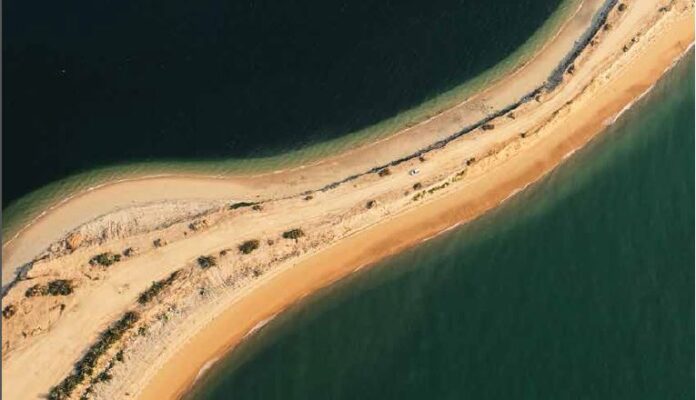In recent reclamation in South China sea the Chinese government has reclaimed around 3,000 hectares in the region also known as the West Philippine Sea. This information was revealed by Rear Adm. Roy Vincent Trinidad, spokesperson for the Philippine Navy, during a press briefing.
According to Trinidad, the total reclaimed area, both within and outside the Philippines’ exclusive economic zone (EEZ), indicates a significant increase in China’s presence in these disputed waters.
The term “creeping invasion” was used by Trinidad to describe these activities, which have been ongoing since 1992. Back then, the Philippines began noticing Chinese markers appearing in the vast expanse of the South China Sea. Over the years, China’s efforts have only intensified, with substantial land reclamation projects transforming submerged features into fortified islands.
Militarized Bases in Strategic Locations
China has established major military bases on several key features in the South China Sea, including Subi (Zamora), Mischief (Panganiban), and Johnson Reefs. These bases are not just reclaimed lands; they are heavily militarized zones equipped with airstrips, harbors for warships, and various military-grade structures. Rear Adm. Trinidad noted that these bases also host advanced communications equipment and structures that likely serve as aircraft hangars.
Tense Waters: Philippines and Vietnam Join Forces Amid South China Sea Conflicts
The Pentagon had reported back in 2016 that China reclaimed more than 3,200 acres of land (about 1,300 hectares) in the southeastern part of the South China Sea. This reclamation includes the creation of artificial islands such as Mischief Reef, which has become the largest artificial island in the region. The reef supports port facilities that service the People’s Liberation Army Navy, the China Coast Guard, and the Chinese maritime militia fleets. Furthermore, it is armed with anti-air and anti-ship missiles, radars, and jammers, making it a formidable military outpost close to the Philippines.
US-China War: Looming Threat Over Philippines’ Strategic Role in Spratly Islands
Despite a 2016 ruling by an international arbitral tribunal invalidating China’s expansive claims in the South China Sea, Beijing has continued its militarization and reclamation activities unabated.
Increased Chinese Presence and Monitoring Efforts
The Philippine Coast Guard has been actively monitoring these developments, particularly at Escoda (Sabina) Shoal. The presence of Chinese maritime militias and reclamation activities at this shoal has raised concerns. The BRP Teresa Magbanua, a vessel of the Philippine Coast Guard, has been stationed at Escoda to keep a watchful eye on the situation.
Interestingly, a massive 165-meter China Coast Guard ship, referred to as the “monster” ship, has been anchored at Escoda Shoal since July 3. Additionally, the Chinese research vessel Ke Xue San Hao has been observed in the area after departing from Mischief Reef. This vessel did not request permission to survey the area, raising suspicions about its activities.
Monster Chinese Ship Drops Anchor Near Escoda Shoal in the Philippines: A Looming Maritime Threat
To verify the nature of the crushed corals found at Escoda Shoal, which may indicate reclamation activities, the Philippine military has stationed its own ship there. This action aims to ensure that the corals were not artificially damaged or moved.
Furthermore, the Armed Forces of the Philippines (AFP) reported an increase in the number of Chinese vessels in the West Philippine Sea. From July 30 to August 5, the AFP monitored 122 Chinese vessels, including three Chinese warships, in various areas of the region. This is a notable increase from the 104 Chinese vessels observed the previous week.
The rising number of Chinese vessels and the continuous reclamation and militarization activities signal a significant escalation in China’s efforts to assert control over the South China Sea. This ongoing “creeping invasion” poses a challenge to regional stability and the sovereignty of nations with territorial claims in the area. The Philippine government, along with its allies and international partners, continues to monitor these developments closely as they unfold.


